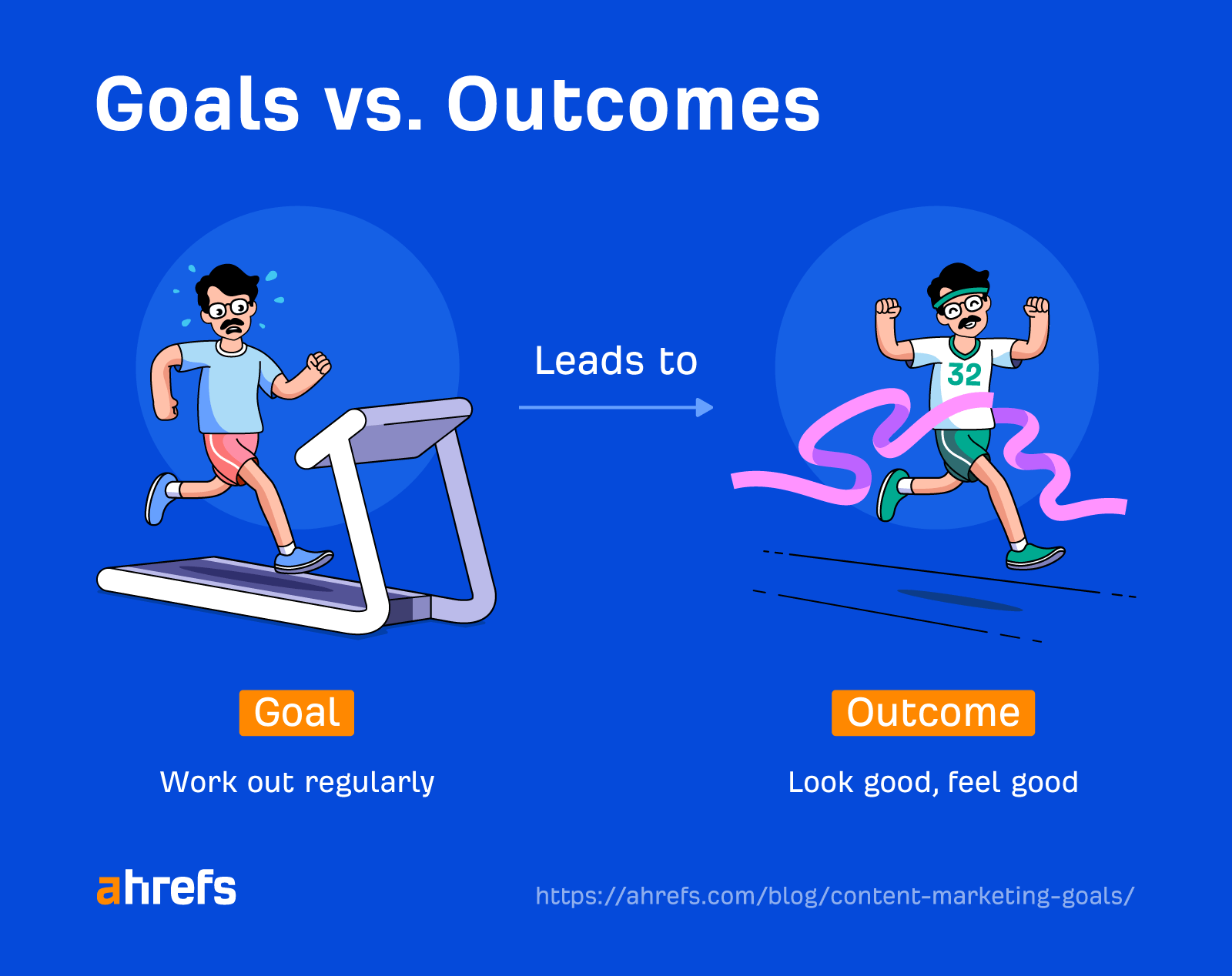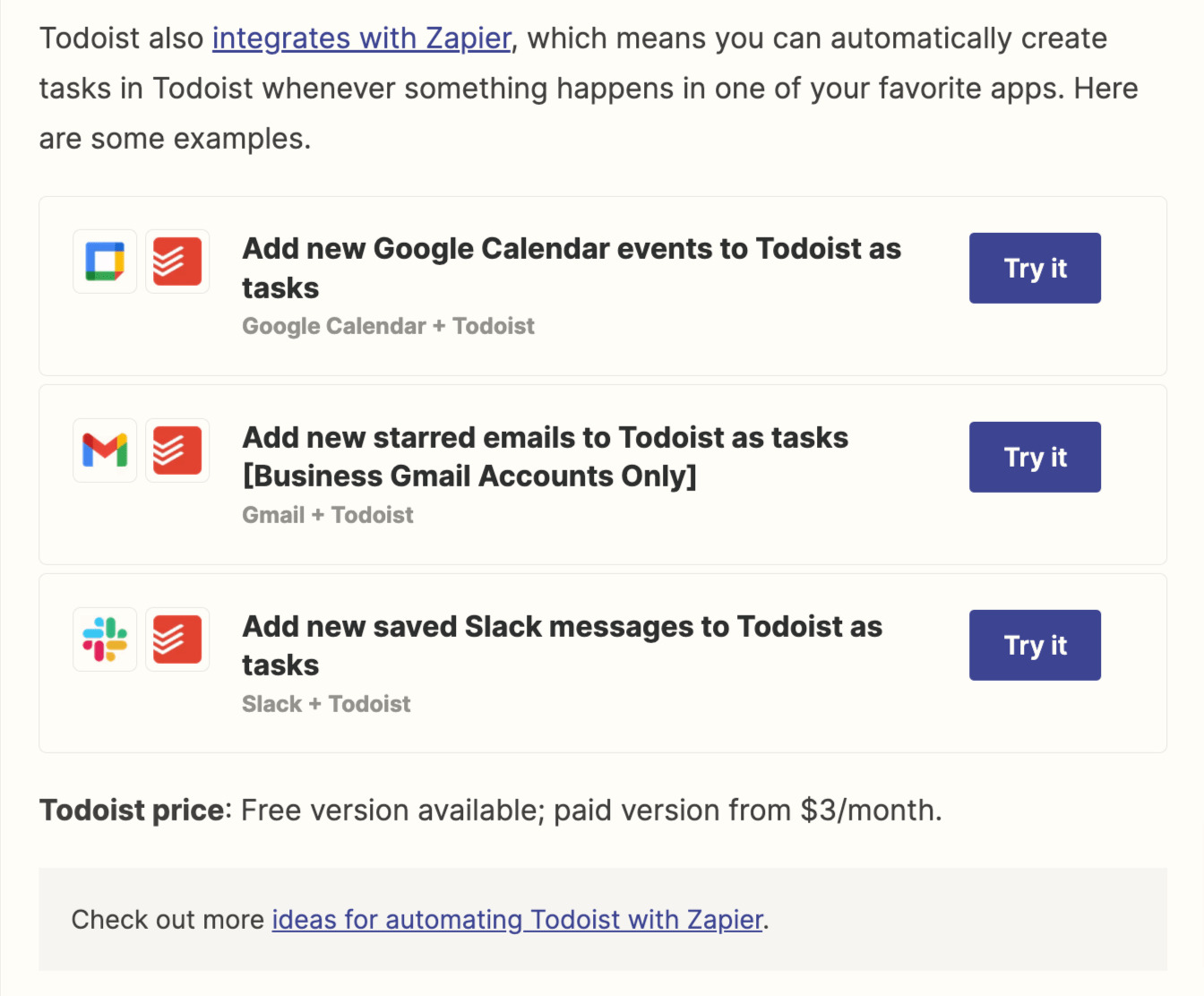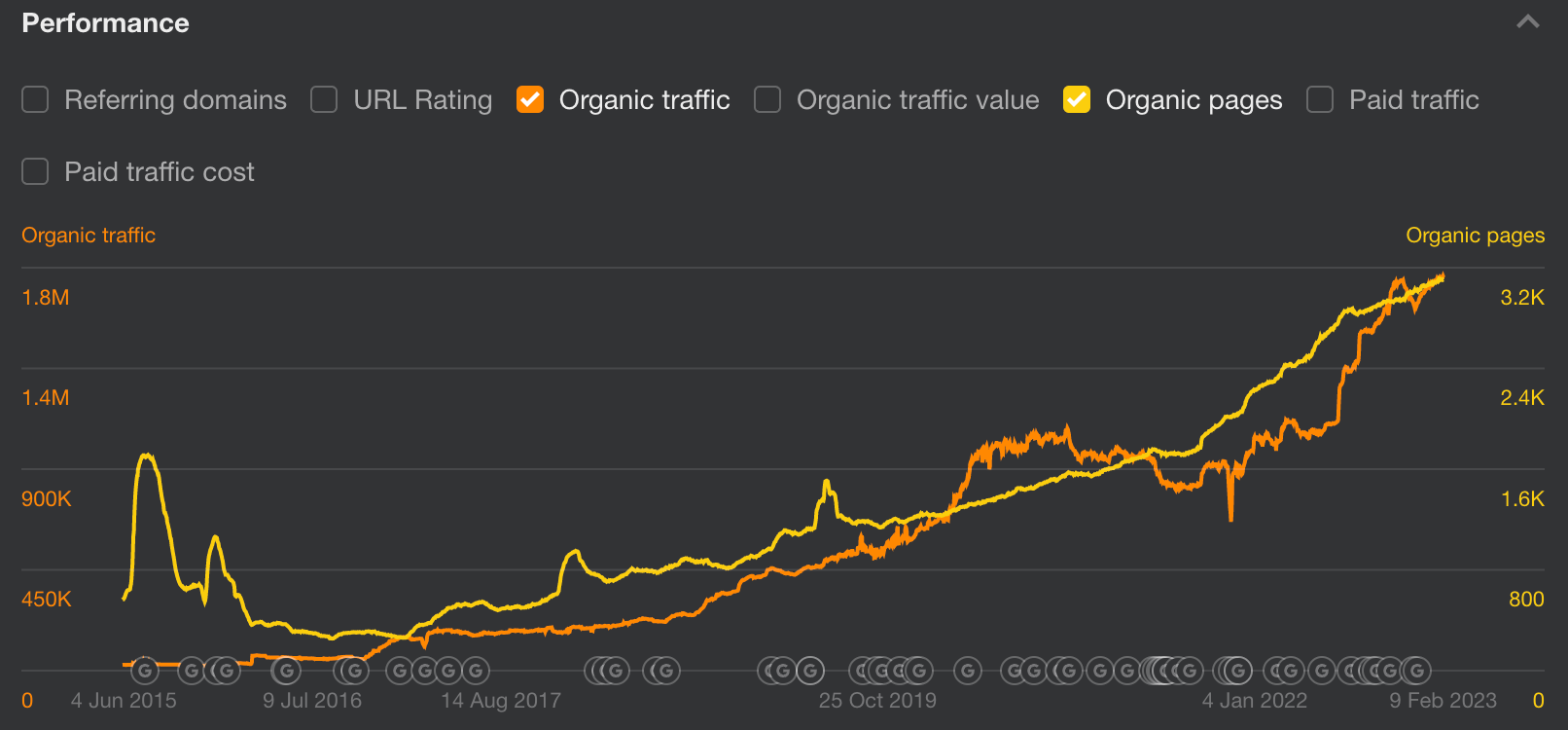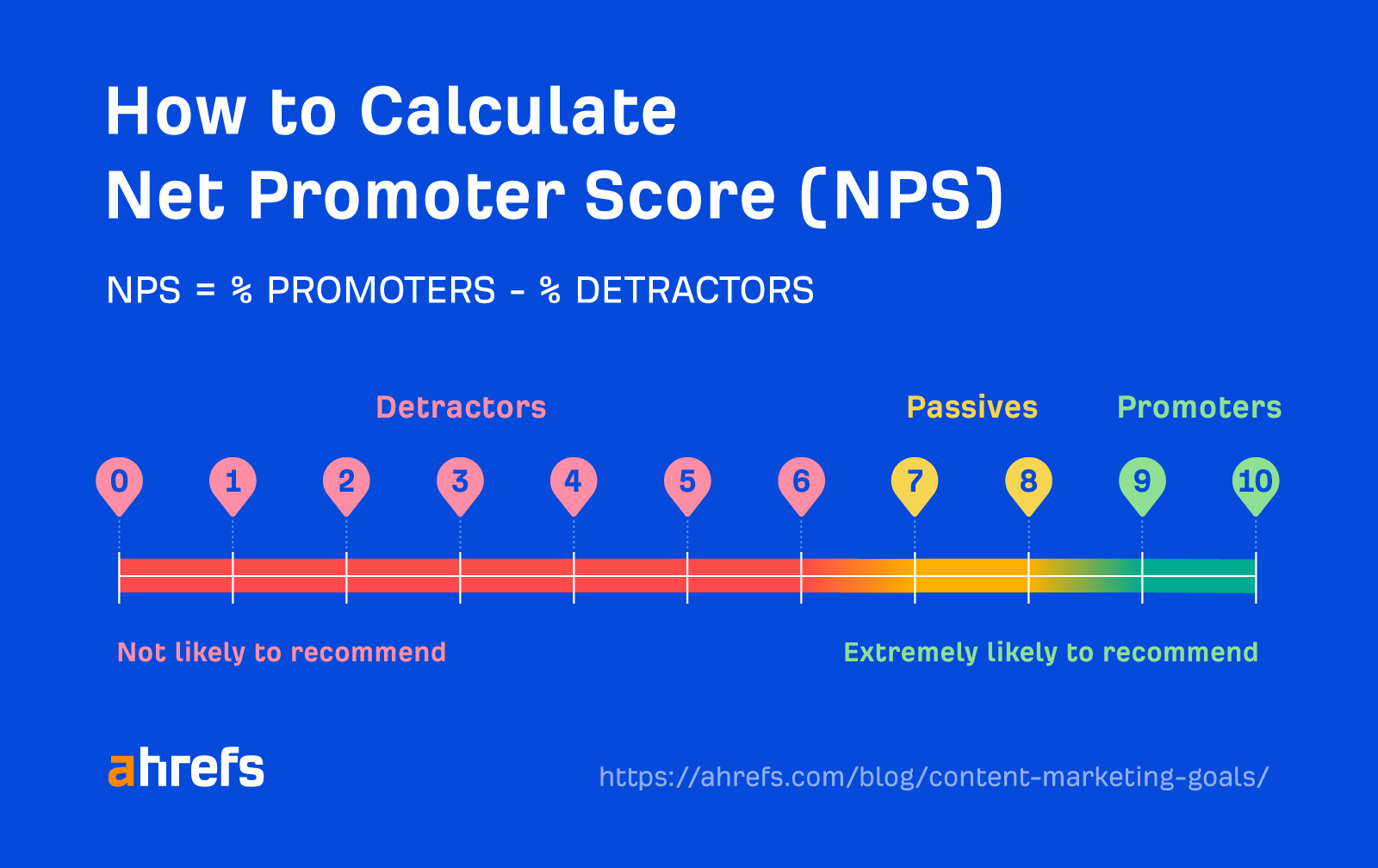First, it mistakes goals for outcomes of content marketing.
Second, you shouldn’t design to hit only one of those “goals” because it can hurt content quality.
In this article, I’ll share a perspective on what’s wrong with the typical model and offer a solution —a slightly more streamlined (and hopefully realistic) approach to content goals.
For years, we’ve been getting used to the same set of content marketing goals. It goes something like this:
- Brand awareness
- Lead generation
- Thought leadership
- Lead nurturing
- Creating interest in the product
- Conversion (sales/sign-ups)
- Brand loyalty
- Customer retention
Sounds familiar? These are the traditional marketing goals repeated by countless publications over the years.
Surprisingly, these goals were built upon two simple fallacies.
1. Mistaking outcomes for goals
In reality, those are not marketing goals; those are outcomes of good content marketing. In other words, this is how businesses benefit from creating helpful and enjoyable content.
If you’re wondering what the difference is:

So the reason to do content marketing is to achieve the outcomes. But to achieve them, you need something else. You need goals that lead to those outcomes.
2. Implying that you can/should focus on one goal
Imagine that your “goal” is to make content that will generate more leads.
Does that mean you can forget about building trust, creating brand awareness, and educating the audience on that same piece of content?
And why would someone sign up for your product or newsletter if they thought the content was of poor quality?
The point that I’m trying to make is that you can’t just pick one of those traditional goals and forget the rest.
If you insist on keeping your content about only one of those traditional goals, you risk deteriorating its quality and, as a result, limiting the outcomes.
Conversely, good content brings multiple outcomes at the same time. It’s just like working out—it affects the whole body and your mind too. But only if you do it right.
The root of the problem
The above two fallacies have the same root: thinking about content in a business-centric way and not a user-centric one.
Good content is user-centric.
At the end of the day, all businesses expect marketing to increase sales. But consumers weigh in many aspects before making a choice. Not all of them can be influenced by marketing, especially content marketing.
In reality, all content marketing can influence is more or less these three things:
- Education
- Inspiration
- Entertainment
I propose to use them as content marketing goals.
Think of the traditional marketing goals as outcomes of user-centric content and consider the following as your new goals.
Goal 1. Education
This is where you create helpful content about:
- Problems your product or service can solve.
- Things that your product/service can make better.
- Other challenges your audience experiences (relevant to your business).
Educational content works out for businesses because people need information to thrive in this world. But what’s even better than information is a tool that helps you use that information and solve your problems. With content marketing, companies can deliver those two things simultaneously: information and the means to use it.
Let’s look at three examples.
Our article called “How to Rank Higher on Google” is an example of the first category—content about a challenge an SEO suite like ours can help to solve.

It’s also the kind of topic we’ll prioritize because of the high Traffic Potential.

The next example is from Zapier. Although its app doesn’t directly solve the problem of “the best to-do list app,” it can make any app experience better via automated integrations.

The third example shows that you can be helpful to your audience even if the solution doesn’t lie within your product. The first page of Google for “how to say no to customers” is dominated by companies whose products can’t solve the problem.

Goal 2. Inspiration
This is content that gives people “the spark” to act and achieve their goals.
Inspiration is different from education in a way that it doesn’t serve complete solutions. It acts on imagination and emotion to show the possible or states an important question. Plus, it’s typically more influential than educational content.
Inspiration works for businesses because it:
- Allows you to reach people before they experience a problem your product solves and when they’re not looking to solve a problem. This allows you to beat the competition to the punch.
- Makes an emotional connection with your audience through excitement and enthusiasm. Emotions make brands unforgettable.
- Lets inspirational brands really stand out.
- Has the power to influence.
- May make people want to come back spontaneously. And that’s important because then the content makes its way to the reader without any competition.
Here’s an example from InVision. It has an entire podcast section where it interviews popular and influential people on topics that generate unforgettable inspiration.

InVision’s podcasts don’t talk about the product but:
- The branding is there.
- Inspiration is the creative fuel for its target audience.
Goal 3. Entertainment
Make “lighter” content with the goal of entertaining your audience. But only if you see signals that your audience appreciates that.
Entertaining content may work for your business in similar ways to inspirational content. It creates an emotional connection and gives the audience a compelling reason to come back. But while inspirational content needs something profound (food for thought), entertaining content will mainly aim to catch the attention and evoke an experience.
On top of that, entertaining content has arguably the broadest reach potential from all three types because:
- People rarely miss an occasion to be entertained.
- In a market where everyone has already published “The Ultimate Guide to X,” you get to jump over that with content no one else has seen before.
- It can reach people very early on in their customer journey. Possibly even earlier than inspirational content.
- It has high potential to go viral.
Again, this kind of content may work, but it’s a bit tricky to handle. Businesses are not the usual entertainers (especially B2B ones). However, entertainment doesn’t need to be about posting memes on social media; after all, there are many movie genres, and they are all entertaining.
In the same sense, entertainment can come from serious topics too. Here’s an example from Mailchimp. It’s a documentary about the owner of a historical candy store.

This is not an obvious way to do marketing, I get it. But pair that image with a quote (provided to Variety) from Mailchimp VP Mark DiCristina, and you’ll get the idea:
We see this content being a great vehicle for attracting people to Mailchimp who have never heard of us and maybe don’t need us yet.
The three goals and their outcomes
As already mentioned, achieving multiple outcomes is a general characteristic of good content marketing. However, with these three goals, you are able to direct your focus on a particular outcome. It’s analogical to training muscle parts—every training will help you burn energy, but you can focus on some parts more than others.
Here’s a rough breakdown.
| Education | Inspiration | Entertainment | |
|---|---|---|---|
| Primary outcome | Interest in the product | Interest in the brand | Attention and awareness |
Here are a few tips that will help you work with setting and achieving content marketing goals.
Express your goals
So we’ve got three general content marketing goals so far. The problem is they’re too general. We need to make them practical using a goal-setting method.
One method you have probably heard of is the SMART method. But since not everyone agrees with it, here are some others: CLEAR, PACT, etc.
I think they all have something to offer and are a matter of personal preference because all are open to interpretation. So use whatever goal-setting method that suits you best to educate, inspire, or entertain your audience. Just consider this:
- Focus on the outputs you can control – What you can’t control, you can’t control.
- Don’t use time frames that are too strict – Good content takes time to produce, and it takes time to show effects too.
- Use simple, practical KPIs – This will help you stay on track (more on this in a bit).
- Don’t be afraid to experiment – If you’re not sure what will happen, make it your goal to find out.
So here are a few examples:
| Good | Bad |
|---|---|
| Publish nine educational articles and two inspirational in Q3 | Generate 400 leads with the new ebook |
| Test the impact on engagement by publishing 20% more entertaining content pieces in the next six weeks | Become a thought leader in our industry by the end of this year |
| See if focusing the content on features X, Y, Z will increase their usage this quarter | Decrease churn rate by 2% |
Use simple, practical KPIs
Content marketing is a long-term game. It’s important to make sure you’re going in the right direction right off the gate and stay on track. This is where KPIs come into play.
The problem is content analytics can become complicated really fast, and there are only imperfect solutions in this area. My advice is to start with simple, actionable KPIs. Once you get more confident, see if adding more metrics helps you create better content.
Here are some ideas for practical content marketing KPIs:
- Publication rate
- Social media engagement
- Share of voice
- NPS
- Impact on product usage
Let’s take a quick look at each of those.
Publication rate
Publication rate is about taking chances. Think of your content topics as chances you need to take to hit your outcomes. The more good chances you take (i.e., topics), the more probable the outcome. New content will help you get more traffic which, in turn, can attract new customers and keep your audience in touch with your brand.
To illustrate, the more SEO content you create, the more organic traffic you can generate.

Keep in mind to put quality over quantity. It sounds cliche, but it’s going to be important for your brand’s reputation.
Social media engagement
If you use social media for publishing content (and you probably will), then you can use social media metrics to see what resonates with your audience.
Social media metrics are often regarded as vanity metrics. But it all depends on how you use them.
Something worth considering is using social media metrics only relative to your social media profile. If you see some content getting more likes, shares, and comments, that’s a sign you should probably do more of that type of content.
Keep in mind these two specific things about social media:
- There are multiple possible reasons why any social media post could be performing well or badly, e.g., time of day, more shares, content more suitable for the platform, etc.
- Sometimes content is engaging because of the messenger and not the message. That’s how Elon Musk gets viral-like numbers by tweeting three digits.

Share of voice in organic search
Share of voice (SOV) in organic search is an SEO metric used to show how visible your brand is compared to competitors for the keywords you target.
It’s expressed by the percentage of all possible organic clicks (from SERPs) for the tracked keywords landing on your website.
To track it, you need a tool like Ahrefs’ Rank Tracker. All you need to do is enter your target keywords, and the tool will automatically calculate and keep track of your SOV (among other things).

NPS
NPS stands for Net Promoter Score. It’s a measure of how likely your audience is to recommend your brand, product, or even content to others.
NPS is one of the most useful metrics in marketing and can be used for many aspects of the business, including content. The reason it’s so effective is that people won’t recommend things that make them look bad. It’s a matter of social image and responsibility.
Here’s how it works: Ask your audience (through email or on-site) this question, “How likely are you to recommend to a friend or colleague?”
The answer is given on a 10-point scale. Generally, an NPS score of 30 to 70 is considered great and a score above 70 is excellent.

Impact on product usage
Impact on product usage can help you measure your educational goals.
The idea is simple: promoting product features through content should increase the usage of those features.
To track feature usage, you will need product analytics tools such as Heap, Mixpanel, or PostHog.
Find good topics
One of the best ways to find topics for content is to discover what people look for in Google—this is called keyword research.
Here’s how you’ll do it in Ahrefs’ Keywords Explorer:
- Type in some things that your audience may be interested in, for instance, “car seat”
- Go to the Matching terms report
- See keyword ideas

For example, here are some keywords that will probably make good topics for educational content:

Other topic generation ideas:
- Analyze competitors – These can help: Ahrefs’ Site Explorer, Ahrefs’ Content Explorer, and Social Searcher.
- Study your niche – Try SparkToro, industry magazines, and communities.
Find the right proportions
Focusing on only one goal can minimize the outcomes.
But doing everything in equal proportion may not be optimal for your business.
So what you need is to find the right proportions that will help you prioritize your goals.
Unfortunately, there is no silver bullet. You’ll need to experiment and find out what works in your niche with your brand.
Two quick tips to get you started:
- You can “guesstimate” a reasonable number and see what happens – For example, 70% education, 20% inspiration, 10% entertainment.
- You can use our prioritization matrix – At Ahrefs, we practice product-led content, which means we prioritize articles that allow us to feature the product naturally. As a result, usually, our goal is to educate.

Think like a farmer, be resourceful
A resourceful farmer doesn’t let things go to waste. They will fix what’s broken and find ways to get the most out of the fruits of their farm.
A resourceful content marketing team will use a similar strategy. Its members won’t just publish something and forget. There are a few options to “squeeze” the most out of content:
- Repurpose content into other formats and platforms
- Build an audience to distribute content directly (for example, grow your email list)
- Promote the content via ads, sponsored newsletters
- Syndicate
- Build links to boost SEO
- Update underperforming content to get more organic traffic
If you’re worried that you’ll be repeating the same message or focusing too much on existing content instead of going full forward, consider this:
- Each of your content produces bits of information.
- That information can be packed and repacked multiple times.
- Your audience is fragmented among different channels with different reach capabilities.
- Messages are more effective when repeated (of course, there’s a limit to this too).
This idea is nothing new. Walt Disney’s success is built upon the idea of diversification and recycling. It’s all laid out in this amazingly complex drawing from 1957.

Final thoughts
OK, so is it that simple to stop worrying about business outcomes and just focus on one of these three goals? Not necessarily:
- Success rarely comes overnight. You will still need to try different things to find what resonates with your audience.
- While you’re out there on a mission to create epic content, your boss could expect that every piece of content brings in customers.
- This approach to content marketing goals is a generalization. And just like any generalization, it simplifies things and makes compromises. Treat it rather like a compass than a map.
Got questions or comments? Let me know on Twitter or Mastodon.



